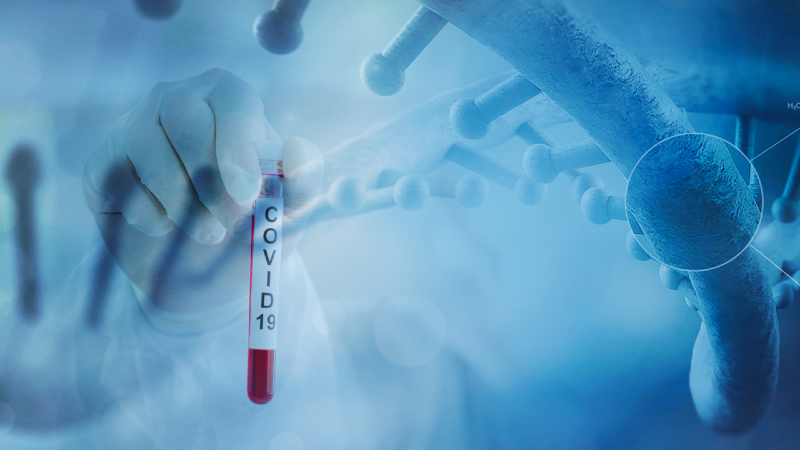Due to the persisting global Covid-19 pandemic, researchers worldwide are working rapidly to identify and develop a viable vaccine candidate. At present, more than 200 prophylactic vaccines are in development against Covid-19. This article evaluates the requirements and desirable features of a successful Covid-19 vaccine candidate, as well as methods surrounding its implementation into the global population.
A Covid-19 vaccine candidate would first need to demonstrate a more than adequate safety profile. The initial aim of clinical trials is to assess a vaccine’s safety, which is tested in Phase I studies where primary outcomes typically examine the frequency of adverse events. A Covid-19 vaccine has the potential to be administered to a large proportion of the global population, so it is paramount to establish the vaccine’s complete safety profile to avoid a disastrous scale of harmful side effects.
Historically, the most common vaccines against viral diseases can be largely segmented into two types: live attenuated vaccines, which utilise a weakened form of the virus, and inactivated vaccines, which utilise virus particles that have been completely neutralised of their ability to infect the host.
Live vaccines usually provide good long-term immune protection while being relatively cheap to produce. However, they possess the capacity to mutate and revert to the original pathogenic form and thus are largely considered to be unsuitable in individuals with weakened immune systems. Notably, these individuals remain one of the high-risk populations for Covid-19. As such, companies such as Indian Immunologicals and Griffith University, which are jointly developing a live vaccine, must ensure that the vaccine does not exhibit significant pathogenicity in patients.
Inactivated vaccines generally exhibit more favourable safety profiles relative to live vaccines, but a weaker immune response is typically observed. Sinovac Biotech is developing PiCoVacc, an inactivated vaccine that is currently in Phase I/II trial. The preliminary results have shown the vaccine to exhibit a favourable safety profile.
Nevertheless, the novel nature of SARS-CoV-2 requires innovative approaches to achieve the best balance of safety and efficacy. AstraZeneca’s AZD-1222 and Moderna’s mRNA-1273 are currently the most promising vaccine candidates, both utilising innovative technologies that incorporate delivering and producing the Covid-19 spike protein (S-protein) into the body to produce an immune response. This mechanism is expected to offer lasting protection by affecting the binding of the S-proteins of the coronavirus to prevent infection.
How well do you really know your competitors?
Access the most comprehensive Company Profiles on the market, powered by GlobalData. Save hours of research. Gain competitive edge.

Thank you!
Your download email will arrive shortly
Not ready to buy yet? Download a free sample
We are confident about the unique quality of our Company Profiles. However, we want you to make the most beneficial decision for your business, so we offer a free sample that you can download by submitting the below form
By GlobalDataAZD-1222 utilises adenoviruses that have been genetically altered to prevent replication and consists of a replication-deficient chimpanzee adenovirus vector (ChAdOx1), which delivers the S-protein. While efficacy results are yet to be published, a Phase III study is underway and AstraZeneca’s production capacity has been upscaled in anticipation of positive findings where safety and efficacy are concerned in the early phase trials.
Moderna’s mRNA-1273 vaccine introduces a messenger ribonucleic acid (mRNA) sequence into the body that encodes for the S-protein, leading to the production of the 2019-nCoV S-protein, which primes the hosts to produce an immune response against the S-protein. Interim Phase I data has shown the vaccine to exceed the mean neutralising antibody titer levels seen in convalescent sera in all the patients while also demonstrating a largely safe and tolerable safety profile. The promising interim results have also allowed Moderna to progress to a 30,000 participant Phase III trial, which is expected to commence on July 27, 2020. Furthermore, the interim Phase I results for BioNTech’s mRNA Covid-19 vaccine has also demonstrated that it can elicit an immune response and display a well-tolerated safety profile. While the interim results of the mRNA Covid-19 vaccines are encouraging, more research is required into whether the neutralising antibodies being produced can provide lasting immunity. So far, there are no approved mRNA vaccines, so this is an unproven method.
Inovio INO-4800 utilises innovate DNA Vaccine technology composed of modified plasmids to produce an immune response targeting the S-protein. Inovio had stated that the preliminary Phase I results showed INO-4800 to be safe and tolerable and that 94% of the subjects demonstrated overall immunological response rates. However, the results did not disclose if the immunological response rates correlated to neutralising antibodies and thus gave little information in terms of the vaccine immunogenicity. Additionally, no DNA vaccines have approved for human use, so this is also an unproven method.
Before a Covid-19 vaccine candidate can be authorised, regulatory agencies must specify the level of immunity or decreased disease severity the vaccine must demonstrate. The World Health Organization (WHO) and the FDA have stated that they would potentially accept a vaccine that displays 50% effectiveness. However, many experts including Dr Anthony Fauci, the Director of the National Institute of Allergy and Infectious Diseases, has stated a higher level of effectiveness is required for a vaccine and maintains that at least a 70–75% level effectiveness is needed to combat Covid-19. Further discussion and modelling is required to identify the minimum level of vaccine effectiveness needed to allow populations to develop some level of herd immunity. Regulatory authorities will have to ensure that they do not expedite the approval of Covid-19 vaccines with subpar effectiveness in response to pressure from governmental organisations. The approval of such vaccines may display short-term benefits, but companies and institutes may be dissuaded from developing more effective vaccinations if a significant proportion of the population has been vaccinated.
While some regulatory criteria have been relaxed to expedite the authorisation process, the first vaccine to market will have had to pass the most stringent guidelines relative to future Covid-19 vaccine approvals. Regulatory bodies such as the FDA have specified that the first vaccine will have to prove that the subjects have developed protection against Covid-19 and not rely solely on biomarkers indicating immunity. Nevertheless, subsequent vaccines may be granted expedited approval based on blood biomarkers as the required biomarker profile for immunity would have then been established.
As a vaccine product passes through clinical development, manufacturers will have to ensure they are taking the required steps to ramp up production, as there is unprecedented global demand. AstraZeneca has already taken significant steps to upscale the production of AZD-1222 by signing a $750M deal with the Coalition for Epidemic Preparedness Innovations (CEPI) and Gavi, the Vaccine Alliance, to produce and distribute over 300 million doses of the vaccine. AstraZeneca has also signed a licensing deal with the Serum Institute of India to produce 1 billion doses of AZD-1222 for low- and middle-income nations. The quick manufacture and distribution of effective vaccine products are vital, as a slow or botched rollout may lead to global unrest due to the devastation and subsequent hardships caused by the pandemic.
Once the initial vaccines are ready to be rolled out, the relevant authorities must strategically identify the most essential population groups to vaccinate. The two main aims should be to reduce deaths and prevent the spread of the disease. This can be achieved by prioritising more at-risk groups including older patients, those with pre-existing conditions, and at-risk ethnicities. Healthcare workers should also be prioritised due to their close contact with Covid-19 patients and their concomitant higher risk of contracting and spreading the virus.
Eradication of the virus remains largely dependent on the development of sufficient immunity within the population to decrease and eventually eliminate the reproductive rate of the virus. To achieve this, a large proportion of the world’s population will require immunisation. Once a wider vaccine rollout is available, public health campaigns surrounding vaccinations will also be required to negate the flow of misinformation that has been highly prevalent throughout the pandemic and that has resulted in wide-scale vaccination distrust, which may ultimately hinder the battle against Covid-19.










Related Company Profiles
Griffith University
Gavi
Moderna
AstraZeneca Plc
The National Institute of Allergy and Infectious Diseases